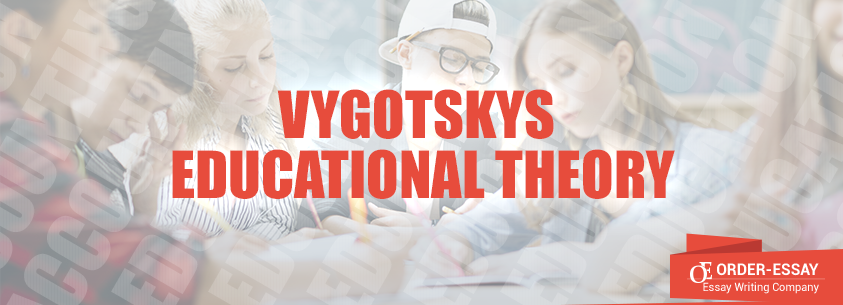
Nowadays, it is important to find the most effective and easy way to educate children. Many education theories try to discover and find a solution regarding this aim. The topic of the childrens play and its role in the development process of a preschooler raises two basic questions. The first question is the origin of the play, and it is supposed to answer what is the role of the play in childrens development. The second question deals with the identification of activities in the play. The essay discusses the connections between Vygotskys educational theory and observations of the video with playing children.
Video Observation
As can be seen from the video Learning Moments – Learning Through Play – 3 to 5 Years (Exchange Press, Inc., 2011), four preschool boys are playing in their classroom. Fred and Bob are talking about the planning of their supplementary actions. All the boys work together knocking down a block structure. Children decide to destroy it. In this decision, boys show they are able to decide how to manipulate with things. Fred is enjoying the process, and he is yelling Yay! We can! (Exchange Press, Inc., 2011). All children are trying to be involved in the same process building the racetrack. Boys have fun and laugh during the play; they look satisfied with their play activity. From the beginning, it is obvious that boys communicate, and some of them say aloud what to do next. That is why this play is spontaneous and does not contain any rules. Each of the boys, probably, could act differently, but it feels like kids are common in their actions. It is almost a silent agreement with no existing rules among the boys. However, their play is mutual and fun for everyone, even for somebody who may observe it.
Basic Implications of Vygotskys Educational Theory
At the heart of Vygotskys educational theory are the ideas of the role of the play in a wide range of ongoing life opportunities. Another valuable point of his theory is the zone of proximal development of the child as a key of its education and training. Vygotsky repeatedly wrote that should one look at a child, and he or she can see that there are much more features of life in the play than can be concluded from the observation of the primitive activity.
The definition of the play is developed based on the pleasure, but according to Vygotskys educational theory, it is not a correct definition (Kozulin, Gindis, Ageyev, & Miller, 2003). However, it seems that ignorance of this approach concerning the problem of the play means intellectualizing the play itself. Since the needs of a child are included into the play activity, thus, it is an effective development activity. Furthermore, Vygotsky inclines to give the matter of play even more general meaning and understanding it in a broader sense (Kozulin et al., 2003). Vygotsky notes that the play of a preschool child involves imagination and realization of unrealizable desires. Vygotsky considers that the central point of the play is the imaginary situation that determines the childs mind.
Besides, Vygotsky continues that first-order symbolism is play. Kids characterize the meaning of objects and actions with representative play whereas the toy may help children picture the object in their mind and move it from the external to internal representation. Thus, a toy is one of the in-between things that guide children in the world of objects by helping them develop the internal representation of the surrounding world. In the play, children handle the knowledge detached from these objects, but they rely on the own real action. Hence, the play is all internal processes being in the external action.
Connections between Vygotsky’s Theory and Observations
During the play on the video (Exchange Press, Inc., 2011), all children are involved in the action and communicate concerning the next decisions. Vygotsky (1976) advised against intellectualizing play and described the origins of play as not the predominant practice of activity but the principal basis of development in early years. Childrens play on the video can be seen as nonsense at first sight; however, it is a logical process of development. This fact can be concluded from the video and childrens play, as it is not the intellectualizing play but observational play.
Furthermore, the formation of communication during the playing activity is different from the formation of communication during the learning process. This is illustrated by the thesis of Vygotsky in which he demonstrates that mental functions exist initially in the form of real childrens relationships in education practice. Boys observe the surrounding world by manipulation with the object. They all need to learn how things can be built and how they can be destroyed. Without this knowledge, they will not develop the two important points of relationship with the environment. Moreover, play activities have become leading at preschool age in their initial forms. According to Vygotsky, these initial forms of play can coexist in the distributed form that bears a little resemblance to the shape similar to a role-playing game. The play operates on child values detached from the things that are around, but it is inseparable from the real action with real objects. At preschool age, the first play is dominant over its meaning, and the child is able to do better than to understand. There is the structure of the action in which the determining factor is its meaning. This factor is developing in the personal identity of a child within the preparation of sensitive structures for the emergence and development of new accomplishments accountable for the educational and learning development.
The play observed on the video helps the development of general learning skills and benefits to create a good psychological climate between the boys. During the play, boys can come over the personal complexes such as indecision and shyness. Additionally, the role of the play goes to the internal processes at preschool age, to the internal speech and development of memory, thinking, and other cognitive processes at this age.



Reflection
In some research studies, it is popular to build educational programs according to Vygotskys theory (Kozulin et al., 2003). A distinctive feature of this concept is the complete abolition of training and bringing the lesson to communication between preschoolers through the play process. In their experiment, Kozulin et al. (2003) were surprised by the low effectiveness of training through the play. Despite this result, the experiment succeeded in extension of the good fellowship among the children in class. Without discussing the idea of misunderstanding the context of Vygotsky, it is possible to note that modern education does not work on the responses to questions concerning the differences of developmental communication in a group of children and adults. From this point, Vygotsky has done much work for finding these differences. In my opinion, such work is essential for a better understanding not only his theory but for understanding the behavior of children and their process of development. Probably, I would never think about the play in this connection. After analyzing the main points of Vygotskys theory, I realized that the play has a great influence on children.
Get a Price Quote
The apparent fruitfulness of such a methodological approach allows analyzing important empirical data about the specifics of mental development at different age and theoretically comprehending the logic of childrens development. From now, for me, the questions of the meaning of the play are associated with the relationship of leading activities and conditions of early development. The learning process through the play is well known, and it meets childrens interests and needs. The play activity provides the educator with the most organic way of learning. Additionally, the play considers the present level of childrens development and prospective opportunities to ensure the formation of general learning and education skills since the play takes the principal place in the development of preschool kids.
Conclusion
To conclude, Vygotsky advised effective usage of the play in preschool childrens development. Moreover, his educational theory sheds light on the relationship between learning and development. During the video observation, it is possible to notice such features as the planning of childrens supplementary actions in the play, developing their social skills, learning to communicate, and emotional development. Thus, Vygotskys educational theory proposed an important key to the understanding of childrens development through the play.








